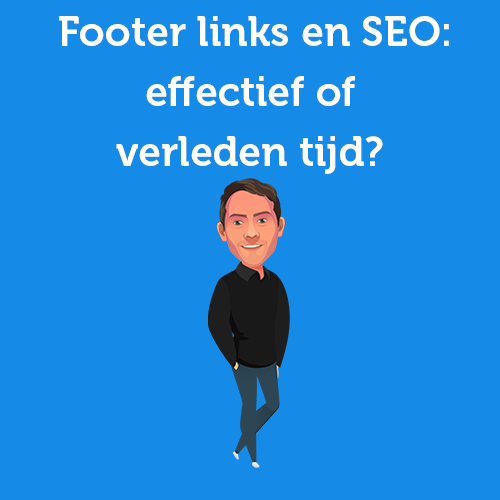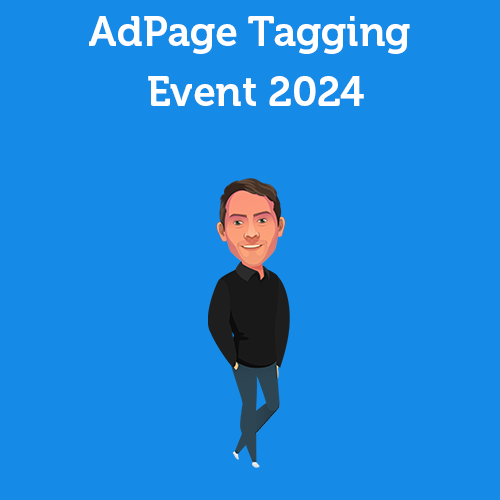Menu
Table of contents
But are you getting the most out of it? Avoid these 16 mistakes ensure a more effective website and more leads.
Mistake 1: Not having a contact page at all
We start this list with possibly the biggest open door this list can contain. Because the biggest mistake you can make with your contact page is not having a contact page.
The argument is often that the contact information is in the footer or other places within the Web site anyway. But, of course, that argument totally fails.
People want a contact page, which is where they expect the contact information to be. In doing so, you also want to know and measure how often your contact page is viewed and, for example, how often the phone number is clicked on.
And you can't do that when you don't have a contact page.
Mistake 2: Renaming your regular contact page like request a quote
With Dutch websites, it still sometimes happens that people call the contact form "request a quote" or "sign up," for example. Yes, these types of pages are important but you always want to have a page called contact.
After all, not everyone is ready to ask for a quote or sign up. Make it approachable for people to contact you.
With English websites, it sometimes happens that they give contact page a fancy name like "Get in touch with us" or "Say Hello," for example. You want to avoid this too. After all, people are not used to this and it says little about the content on the website.
In either case, it is difficult for people searching for the contact page within the search function on your website to find your contact page. Because the page called "contact" doesn't exist.
Mistake 3: Mentioning your contact page only in the footer and not in the menu
"But the contact page isn't that important, is it? - Customer who does not have the contact page in the menu, but does have it in the footer.
Yes, he is! In fact, the contact page is one of the most important pages on your website. A well-stocked contact page creates trust, shows that people can easily contact you, and is useful for existing contacts because they can quickly find your Chamber of Commerce number, for example.
So always make sure your contact page is in the menu. And no, putting the page in a dropdown doesn't count either. The contact page should really be visible in the menu.
Error 4: A form that doesn't exist or doesn't work
It has long been clear to me what should and should not be on a contact page, but unfortunately not to everyone. This absolutely should be on there:
- Contact details
- Address details
- Form
And that last one, it is frequently missing! 'If they want to reach me, they just call' is a frequently mentioned argument. Not everyone dares, wants or can contact you directly. Remember that not everyone is like you.
So a form ensures that you have some contact information right away, that people can contact you in an approachable way, and that they can ask you a question first, for example.
Mistake 5: No contact information, just a form
We are now turning error 4 completely around for a moment. Because it also happens that websites have a form, but no contact information.
So that means no direct communication is possible, which is a missed opportunity. Because maybe that one big lead didn't save your phone number or maybe the newspaper wants to call you to ask what your opinion is on a particular topic.
You don't want to do business with a company you can't call in case of problems, do you?
Mistake 6: Important contact information below the fold
If you have all the most important contact information on your contact page, make sure they're right there on the screen. In other words, put them "above the fold.
You don't want people searching and scrolling for your phone number, and you don't want that lukewarm lead to elude you because your form is too far to the bottom.
Should you use a header photo or a Google Maps map above the contact information, don't make it too big. Next, check on mobile and desktop that all the important information is in direct view.
After all, people simply expect your contact information on your contact page. So just give them right away.
Mistake 7: A wrong phone number, email address or address
This mistake makes me think of a client I worked for years ago at another marketing agency. The client hadn't been getting any inquiries for two weeks and we all didn't know what was causing this.
After triple-checking everything, it turns out they switched mail addresses and the mail was not forwarded to the new mail address.
But of course, it could also be that you made a typo or that you moved.
So always check it out!
Mistake 8: Form not optimized for mobile
The mobile design I've mentioned this article before, so I'm assuming your mobile design is already in place (you checked, right?).
If not, please do so. It happens often enough that the input fields go too far, certain titles are skewed or the Captcha is not clickable.
Then immediately check that the form on tablet also works and looks good!
Error 9: Making fields that should not be required mandatory (or making fields that should be required not mandatory)
What to include in your contact form depends on a number of things. Consider the purpose of the form, your business and your target audience.
Make sure that all of that matches, but also make sure that matches with the required fields. After all, if you have a newsletter that people can subscribe to, don't make the phone number mandatory.
You don't need those at all, and your potential customer doesn't want to fill them out. Do you sell a high-end product where personal contact with the customer is key? Make sure the phone number is required.
Then you can call the customer and filter out the people who only want to shop by price. They do not enter their phone number and often only want to know the price.
Error 10: Too many fields in the form
No, it is neither necessary nor permissible to ask people their home address, BSN, Hyves password and the name of their first pet (doesn't everyone on earth use the latter for their password + their own date of birth?).
This is a bit of an exaggeration, of course, but I think you get what I mean. Always make sure you ask for the minimum to get the maximum out of it. The rule I have is: as short as possible and preferably as few pitches as possible.
Do you only need a name, phone number and a photo of the kitchen, for example? Then stick to that. Don't go asking for all dimensions, desired materials, and installation date in advance.
Surely you always discuss this over the phone or when you visit. Make sure the first contact moment is as smooth and as easy as possible.
Error 11: Too few fields in the form
In addition to having too many fields, there is also the possibility of having too few fields. Huh, does that exist? Yes, that exists!
In fact, I often see people only give the option to leave a phone number or only a mailing address when subscribing to a newsletter.
Yes, you want it to be as easy as possible, but you want to get the essential information. Without a first name, you can't personalize your emails, and that's a missed opportunity.
And when you call a lead, you want to know who you're going to call, right? Because then you can properly prepare for the call and research the party you are sitting across from you.
Mistake 12: Using one form for all your campaigns and actions
The classic example with this error is that people use the same form for, say, a quote request and a contact page.
You always want to match the form to the page and the purpose of the form. Therefore, don't blindly use the same form everywhere. Really get into the skin of the target audience and find out what they want and don't want.
In addition (depending on how you have it technically set up), this could also have implications for making your form measurable or measuring conversions.
After all, if this is actually one form on the backend, then you can't, for example, use two thank you pages or know how many times a form was or was not filled out per page.
Mistake 13: Action button not standing out enough or below the fold
In the end, you only want one thing when people are on your page with the form. That is, to fill out the form AND submit it.
If your action button does not stand out enough because the color is not eye-catching enough or there are multiple buttons near the submit button, this can cause people to fill out the form but still not submit it.
Therefore, always make sure the action button matches the house style of your action button. If you use orange everywhere for your action button, make sure the form button is orange as well.
Then people will know what to expect. In addition, make sure the action button is above the fold and that the button is always in view. Then potential customers won't have to search.
Error 14: Phone number and email address not clickable
I really see this error on the contact page going wrong on a daily basis. An email address and a phone number that are not clickable.
How annoying is that. You want to do business with a company and contact them. You click on the phone number and nothing happens. Then you have to copy and paste the number to call 'em (if you even know how to do that, because I don't think my mother can).
There is no greater conversion killer in my opinion. I can't say it often enough: always make sure that contacting your business is as easy as possible.
Mistake 15: Not emailing a confirmation when people have completed the form
I think you recognize this mistake yourself. You have just made a complaint somewhere, asked a question or placed an order, for example.
It all went very smoothly, you clicked on the action button and didn't see a message of "the form was sent properly" anywhere. You then check your mailbox and you don't see a confirmation there either.
Hey. Did I get it right? Was the email received properly? Since you have doubts, you go ahead and call or send another email after all.
And what turns out? Yes, the email was received in good order. Only that party does not send automatic confirmation emails.
That's a missed opportunity. After all, there they could once again promote their company, share USPs with you or do branding in a fun way.
Mistake 16: Not measuring conversions that occur on the contact page
Actually, this mistake has been passed around as well. After all, at the bottom line, for every entrepreneur (with the exception of a few) it's all about how much money is made.
And the basis for that is the measurability of your website. Think about the number of visitors, average session duration, but also the number of conversions.
In short, it's all about your quote requests, calls and orders. You need to make those all measurable to make sure you know how often they were done and what action led to what result.
Because if you haven't, then you don't know if you're on the right path.
This article was written on December 14, 2020 and updated on July 14, 2023.
What is the biggest mistake you can make regarding a contact page?
The biggest mistake is not having a contact page at all. Not having a contact page makes it difficult for visitors to contact you and also makes it difficult to measure and analyze contact traffic.
Why is it essential to put the contact page in the menu and not just in the footer?
The contact page is one of the most important pages on a Web site. It is important to place the contact page in the menu so that it is easily accessible to visitors. Simply placing the contact page in the footer can cause visitors to have difficulty finding the page, which can lead to a diminished user experience.
Why is having a working form on the contact page important?
Having a well-functioning form on the contact page is important because it provides an approachable way for visitors to contact you. A form provides the ability to collect contact information directly and allows visitors to ask questions or request information in an easy way.











Written by: Daniel Kuipers
Daniel is the founder of Online Marketing Agency. He constantly scours the Internet for the latest gadgets and tactics and blogs about them in understandable language. Well, sometimes.